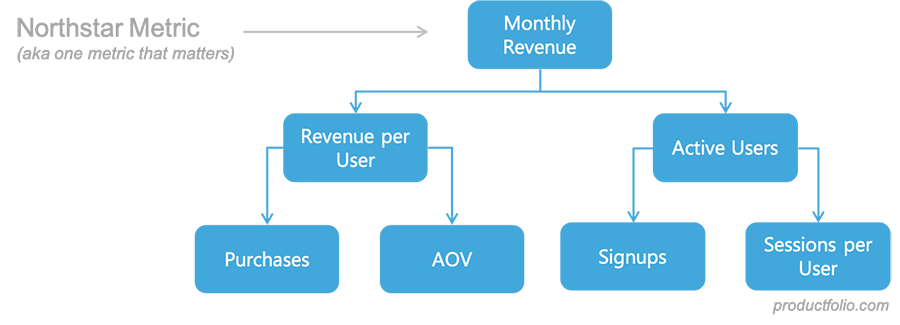What is the NorthStar Framework?
The North Star Framework emphasizes a single metric, on which success hugely depends. This model centers on the aptly-named North Star Metric (NSM) that captures the key value that your product has to offer the customer. It is discussed at length in the guide North Star Playbook.

Prior to the book by Amplitude, some experts had suggested working with a “True North” identified and in focus. Sean Ellis is a major figure that helped to popularize the idea, describing the NSM as the metric that “best captures the core value” customers get from your product.
The NSM is a prominent indicator of sustainable growth. It helps to establish a clear link between the product and the overall business. The North Star Framework captures your product strategy succinctly with a single, vital metric. It serves the following purposes, among others:
- Communication of your unique product strategy
- Promotion of greater emphasis on customer value
- Encouragement of faster, more effective decisions
- Greater focus on sustainability and product-led growth
- Improved team alignment
Along with the NSM, the framework includes a number of key inputs that help to achieve its purposes. You aim to impact these inputs which, in turn, influence the metric.
Qualities of a Good North Star
The North Star Framework focuses on just a single, vital metric. This helps to make it easier to manage for product leaders than when chasing multiple metrics. However, larger corporations with several divisions, departments, and units may have different metrics for each of these.
There isn’t any one metric can fit in perfectly with the description of a North Star. The following are some key qualities or characteristics of a solid one, according to Amplitude:
Expresses value – It should be easy to see why it connotes value to the customer.
Depicts product vision and strategy – Once identified, a good NSM should display a clear link to your product strategy and vision. It should be easy to see the two in it.
Leading indicator – It shouldn’t just tell you what happened in the past but help to forecast potential results.
Actionable – A strong North Star is one that it is possible to influence through your work.
Understandable – Your North Star mustn’t be abstract. A person that isn’t so technical should be able to understand it.
Measurable – A metric is practically useless if you can’t measure it. Therefore, you need to be able to measure your NSM.
In addition to the foregoing, a good NSM isn’t a “vanity metric.” What this means is that it shouldn’t be mute about the long-term success of your product.
North Star Framework and Themes
The North Star model and themes offer an escape from the risks of feature-based roadmaps. They keep you from being too focused on features or being expected to deliver every single one. While the two can be used separately, they may be more effective when used together. They are complementary tools that promote better-informed decisions and improved alignment.
A theme includes different features that are related to your goal. It helps to link a group of features to a central idea or goal. Themes help you to make the bigger picture clearer to everyone, making it easier to get the backing of stakeholders.
Themes (rather than specific features) work well with the North Star Framework because of their flexibility. You can use themes to express the different dimensions of the work you want to do. According to Amplitude’s John Cutler, you could use the model to promote alignment around your product strategy while you link themes to the framework’s key inputs.
The use of themes ensures that you only include features that are related to your goal or metric. This helps to avoid giving in to all feature requests, especially those that don’t tally with your strategy. When using them, you don’t get easily distracted by ideas that come across as exciting on paper.
When is the Framework Best Used?
The North Star Framework is most suitable for product-led companies. It is one to consider if your organization seeks to promote sustainable growth through its products. This requires constantly looking out for opportunities to solve problems for customers. It may be worth noting that being product-led doesn’t mean an organization being led by product management. Rather, it means optimizing structures, processes, and channels to promote product success, with this helping company growth.
The model helps product managers to avoid a situation whereby they are expected to deliver everything on feature-based roadmaps. It enables them to respond properly to the latest trends or changes, and faster too.


